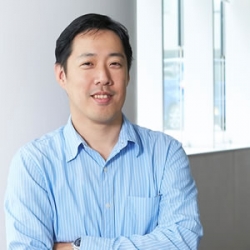Discover more about the topics and technologies that were discussed at the 2019 conference, via a series of exclusive interviews with a selection of our expert speakers.
 Takehiro Miyoshi, senior manager, alliance product and tech planning department, Renault-Nissan-Mitsubishi Alliance, Japan, on the latest from the OEM's 'robot taxi' trials
Takehiro Miyoshi, senior manager, alliance product and tech planning department, Renault-Nissan-Mitsubishi Alliance, Japan, on the latest from the OEM's 'robot taxi' trials
What is your presentation about?
Nissan believes that rather than being just a replacement for existing taxis, self-driving taxis have the potential to be a new form of urban transportation and change lifestyles, so Nissan is working on various projects in order to implement the service into communities. In 2017 Nissan started conducting self-driving taxi demonstration experiments in the city of Yokohama. Nissan is continuing to work with the municipal government to explore how to harmonize this new mobility service with urban planning.
What is the ‘robot taxi’ and how does it work?
A robot taxi is a taxi service with autonomous vehicles. Users can call this robot taxi by smartphone in the same way as a typical mobility service like Uber. Vehicles can run independently, but for secure safety the vehicle is monitored by a teleoperation center; if vehicle encounters trouble, operators can support several tasks.
What was the scale of the Yokohama test? Any surprising results?
The scale of our testing was not huge, just a few autonomous cars. We used modified Nissan Leaf and e-NV200 vehicles. For this type of testing, we don’t need a big number of vehicles. We tested in the center of Yokohama in an area of a few kilometers. The purpose was mainly to understand what we need in addition to making the vehicle, such as regulatory shaping, information about the user journey and customer acceptance. It is very important to begin to understand what we must develop for city implementation. Just making autonomous cars is totally different from operating autonomous cars on public roads.
How do you envisage robot taxis could shift transportation and lifestyles?
This depends on the size of the fleet, but it is the main topic of this presentation. One example is town planning, which usually begins near stations and spreads outwards. If it takes 30 minutes to walk to a station, the value of real estate is comparatively low. However, if this 30-minute walking distance is connected by a car, the definition of ‘near’ changes.
Do you see a future for private car ownership?
We have so many types of mobility today, so I think we need more time to shift mobility. In addition, we need to change infrastructure, and this takes a longer time to change.
Any plans for future trials? Are you aware of any similar trials happening elsewhere?
Our next step might see this project scale up – in the same way as the others. And we at Nissan have an alliance with Renault; they are running a similar project in France. We are collaborating with them for this work.
Don’t miss Takehiro Miyoshi, senior manager, alliance product and tech planning department, Renault-Nissan-Mitsubishi Alliance give his presentation titled Future city planning in Japan – emerging opportunities in Mobility as a Service on Tuesday, December 10 at 14:00hrs as part of Stream 3: Changing Landscape for the Automotive Industry. See the full conference program here. Register for your conference pass here.